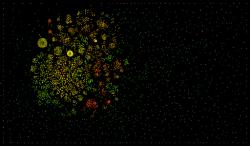- Home
- About ISRclose this panel
- People
- Events
- Researchclose this panel
- Publicationsclose this panel
- Happenings
- Partnershipsclose this panel
- Contact
You are here
Research Areas
- Alloy
- Analysis
- Android
- Appropriation
- Architecture
- Big Code
- CSCW
- Classification
- Clone Detection
- Clone Mapping
- Code Obfuscation
- Collaboration
- Computer Games
- Debugging
- Distributed Software Engineering
- Empirical Study
- Energy Testing
- Exploitability of Vulnerabilities
- Game Theory
- Group Drawing
- Human-Computer Interaction
- Information and Communication Technology
- IoT
- Java
- Large Systems and Large Data
- Linux kernel
- Machine Learning
- Maintenance
- Malware
- Modularity
- Mutation Analysis
- Mutation Testing
- Open Source
- Privacy
- Search-based Energy Testing of Apps
- Security
- Semiotic Engineering
- Simulation
- Software Acquisition
- Software Analysis
- Software Architecture
- Software Design
- Software Development Environments
- Software Engineering
- Software Requirements
- Specification
- Sustainability
- Test-Suite Minimization
- Testing
- Trust
- Virtual Worlds






0ceb.png?itok=jT7i6DAQ)

6eb1.png?itok=WgWac6St)




